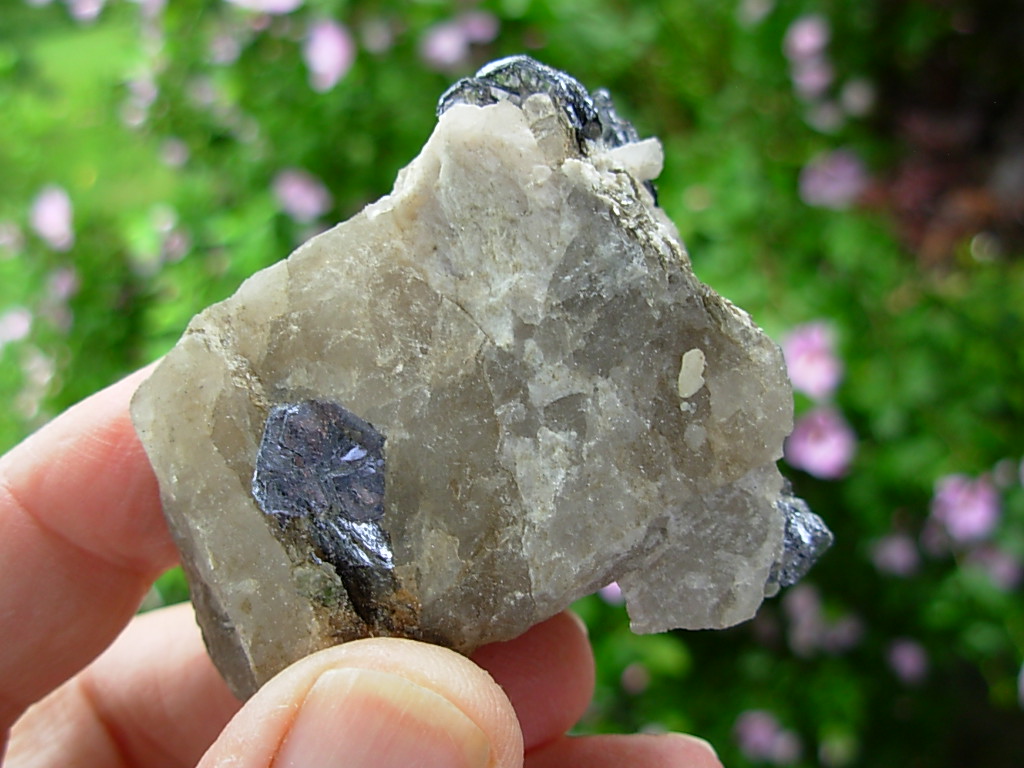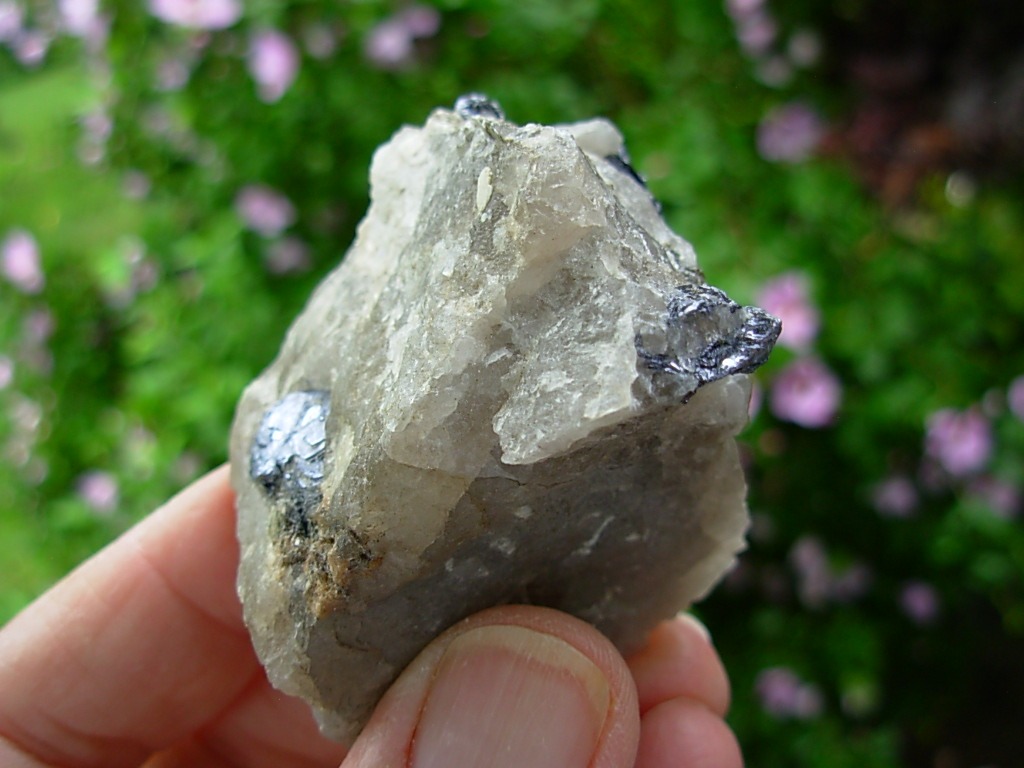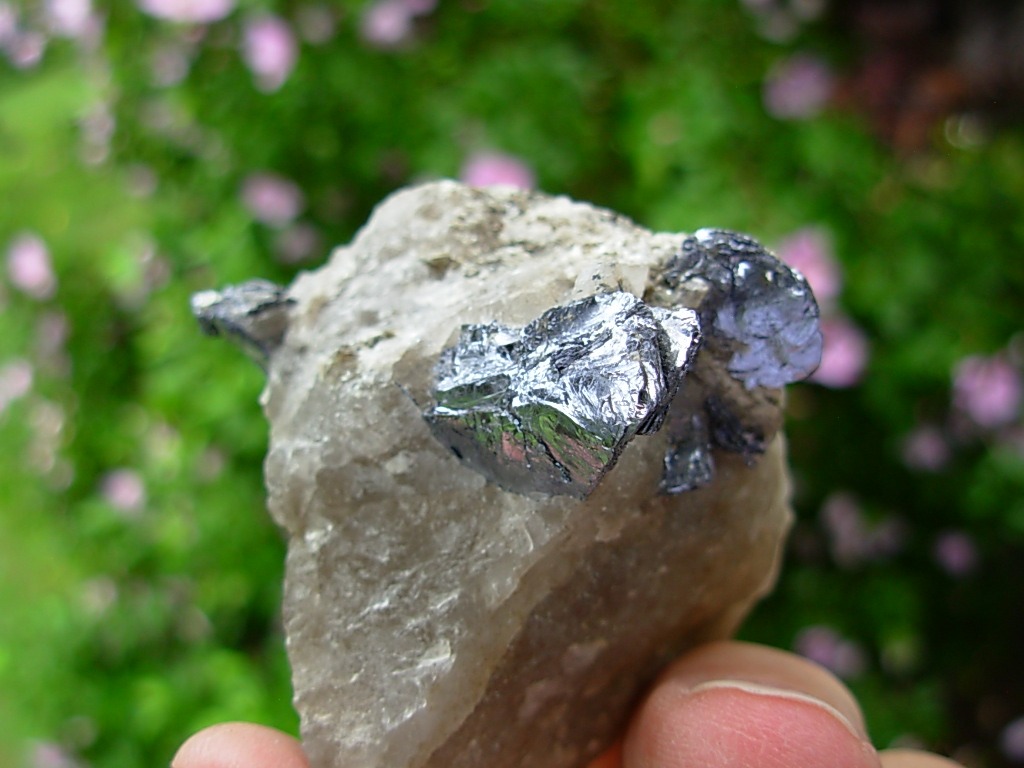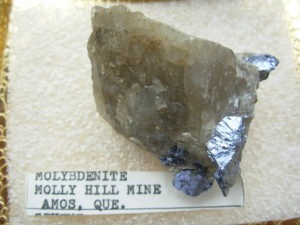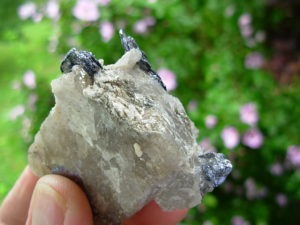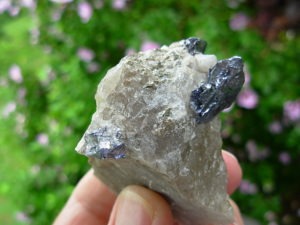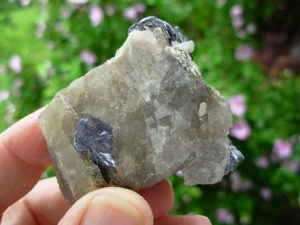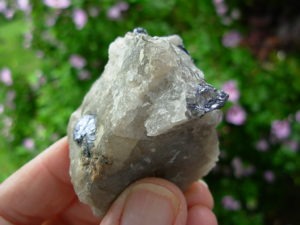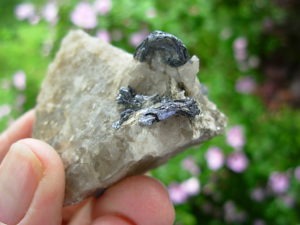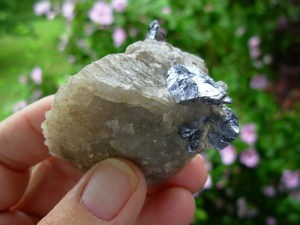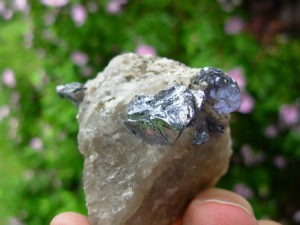Molybdenite
Molybdenite, also known as “Moly Ore”, is a mineral of molybdenum disulfide. It is a very soft metallic mineral. It can be easily confused with graphite, but not with many other minerals. Graphite is a darker black-silver color and has a black-gray to brown-gray streak. Molybdenite has a bluish-silver color and a blueish silver streak. Prior to the discovery of molybdenum as a separate element in 1778 by Karl Wilhelm Scheele, Molybdenite was thought to be Graphite or a lead ore.
Molybdenite is composed of alternating layers molybdenum and sulfur. The sulfur's layers are strongly bonded to the molybdenum, but are not strongly bonded to other sulfur ions. This produces the effect of softness and allows for perfect cleavage. It is soft enough to leave a mark on paper and it has a “greasy” feeling surface due to its extreme softness. Molybdenite is a very high luster mineral and is a favorite and interesting mineral to have in any collection.
It is named for the molybdenum content (which gets its name from the Greek word “molybdos”, meaning “lead,” referring to its lead-like color and metallic luster). Molybdenite is the most abundant molybdenum-bearing mineral. It occurs as unique crystal formations in many localities including the United States, Canada, Norway, Russia, Germany, Morocco, Australia, and Japan.
It has been found on rare occasion in meteorites. It is commonly found in “contact metamorphosed” limestone, pegmatites, granites, fine grained igneous rock, disseminated porphyry deposits and in high-temperature hydrothermal vein deposits. (Metamorphic rocks are formed when sedimentary and igneous rocks become changed, or metamorphosed by being in contact with hot magma or lava. This is called contact metamorphism.)
Ref. Handbook of Mineralogy, Anthony et al (1995) and MSA at http://www.handbookofmineralogy. org/pdfs/molybdenite.pdf
Item # 1MOLYB07169462
Molybdenite in Quartz matrix from the Molly Hill Mine, Quebec, Canada
$54.00

This specimen was collected in the 1960’s and was procured from a mineral dealer in Amos, Quebec, Canada. The original collector made the tag shown in the photos that comes with the specimen. It is from the Molly Hill Mine (also known as Moly Hill Mine) operated by the Moly Hill Mining Corporation Ltd. from 1964 to 1968. The mine is located in La Motte, Abitibi RCM, Abitibi- Témiscamingue, Québec, Canada This piece has three protruding Molybdenite crystals (19 x 11mm, 11 x 7mm, 10 x 7mm) and one other almost flush with the matrix quartz (14 x 9mm).
This specimen weighs 3.12 oz or 0.196 lb. (88.5g) and measures 2.3 x 1.9 x 1.6 inches (59 x 48 x 41mm)

